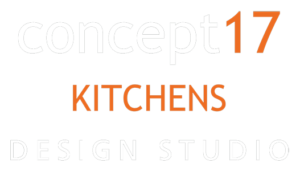5 Common Kitchen Design Mistakes—and How to Avoid Them
Designing a kitchen can feel like a big puzzle, and it’s easy to make a few slip-ups that can mess up how well your kitchen actually works. We’re going to look at five big mistakes people often make and, more importantly, how you can totally avoid them to get a kitchen you’ll love using every single day.
Key Takeaways
- Always plan your kitchen layout carefully before buying anything. This is super important for how well your kitchen will work.
- Make sure you have enough walking room around everything, especially if you’re thinking about adding an island.
- The ‘kitchen triangle’ (sink, stove, fridge) rule is still a big deal. Keep these main spots easy to get to from each other.
- Think about where everything will go, even small appliances, to avoid a cluttered mess later on.
- Don’t forget about the flooring! Pick something tough that will last, and think about how it works with the rest of your kitchen.
1. Kitchen Triangle

The kitchen triangle is a classic design concept, and honestly, it’s still relevant. It focuses on the relationship between your sink, refrigerator, and cooktop. The idea is to arrange these three elements in a way that minimizes steps and makes cooking more efficient. I mean, who wants to walk a mile just to grab something from the fridge while they’re cooking?
The goal is to create a smooth workflow.
Think of it as a well-choreographed dance in your kitchen. You want to move effortlessly between prepping, cooking, and cleaning. If your kitchen layout forces you to take unnecessary steps, it’s time to rethink things.
Now, here’s the thing: the triangle shouldn’t be too big. If the distances between these three points are too great, you’re defeating the purpose. But it also shouldn’t be too small, or you’ll feel cramped. Finding that sweet spot is key. Also, make sure there aren’t any major obstructions in the kitchen triangle, like an island that’s too big or a poorly placed cabinet. You want a clear path between these zones.
Here’s a simple breakdown:
- Sink: For prepping and cleaning.
- Refrigerator: For storing ingredients.
- Cooktop: For cooking the food.
- Keep pathways clear.
2. Circulation Space

One of the most overlooked aspects of kitchen design is adequate circulation space. It’s not just about fitting everything in; it’s about how people move and interact within the space. Poor circulation can lead to a cramped, frustrating kitchen experience, especially when multiple people are trying to use the area at the same time.
- Think about the flow: How do you typically move between the sink, refrigerator, and stove? Are there any pinch points where people are likely to bump into each other?
- Consider appliance doors: Make sure there’s enough room to fully open the dishwasher or refrigerator without blocking walkways.
- Don’t forget seating: If you have a kitchen island with seating, ensure there’s enough space for people to sit comfortably and for others to pass behind them.
A well-planned kitchen should allow for easy movement and prevent bottlenecks. This means considering the placement of appliances, countertops, and seating areas in relation to each other. Aim for clear pathways and avoid creating obstacles that can disrupt the flow of traffic.
To avoid a cramped kitchen, consider these guidelines for kitchen triangle walkways:
- Single-cook kitchens: Aim for at least 36 inches of walkway space.
- Multi-cook kitchens: Increase that to 42-48 inches to accommodate multiple people moving around.
- Around islands: Ensure at least 38 inches on each side of the island for smooth traffic flow. The size of your island should be proportional to your kitchen’s dimensions.
3. Kitchen Island
Kitchen islands are super popular, and for good reason. They add extra counter space, storage, and can even serve as a dining area. But, like anything else in kitchen design, it’s easy to mess up the island. A poorly planned island can actually make your kitchen less functional, not more. Let’s look at some common mistakes.
The biggest mistake is choosing an island that’s too big for your kitchen. It’s important to consider the overall flow and available space.
- Not enough space around the island.
- Poor placement relative to the work triangle.
- Lack of functionality (no sink, no outlets).
Think about how you actually use your kitchen. Do you need extra prep space? A place for the kids to do homework? Or just more storage? Answering these questions will help you design an island that truly works for you.
It’s also important to think about the style of your island. Does it match the rest of your kitchen? Does it have enough storage for your needs? These are all important questions to ask before you start building. Remember to consider kitchen workflow when planning your island. A well-designed island can be a game-changer, but a poorly designed one can be a major headache.
4. Kitchen Layout
Your kitchen layout is more than just where you put the cabinets; it’s about how you move and work in the space. A well-planned layout makes cooking easier and more enjoyable. A bad one? Prepare for daily frustration. It’s worth spending time on this aspect of your kitchen design.
Think about your cooking habits. Do you need a large prep area? Do multiple people cook at the same time? Answering these questions will help you determine the best layout for your needs.
Here are some things to consider when planning your kitchen layout:
- Workflow: Consider the flow between the refrigerator, sink, and stove. This is often referred to as the kitchen triangle. Make sure these areas are easily accessible.
- Counter Space: You can never have too much counter space! Plan for ample space next to the sink and stove for food preparation.
- Storage: Think about where you’ll store your dishes, cookware, and food. Maximize cabinet space with smart organizers. Don’t forget about kitchen lighting ideas to illuminate your storage areas.
- Island Placement: If you’re including an island, make sure there’s enough space to move around it comfortably. A too-small gap is a kitchen island design mistake you want to avoid.
- Wall Space: Don’t ignore invaluable wall space. Use it for shelves, cabinets, or even a pot rack. This can free up counter space and make your kitchen more efficient.
Getting the positioning of the main elements wrong is a big mistake. Make sure you have enough prep space between the sink and cooker. Also, ensure the refrigerator and dry food storage aren’t too far from the prep spaces.
5. Flooring
Okay, so you’ve planned your kitchen layout, picked out your cabinets, and even decided on the perfect countertop. But wait! Don’t forget about the flooring. It’s easy to overlook, but the right flooring can really make or break the entire space. I mean, think about it – you’re going to be spending a lot of time standing in your kitchen, so you want something that’s both comfortable and durable. Plus, it needs to look good, right?
- Durability is key. Kitchens see a lot of action – spills, dropped pots, and constant foot traffic. You need a floor that can handle it all.
- Consider comfort. You’ll be standing for long periods, so something with a little give is ideal.
- Don’t forget about style. Your flooring should complement the rest of your kitchen’s design.
Choosing the right flooring can be tough. There are so many options out there, and it’s hard to know where to start. Take your time, do your research, and don’t be afraid to ask for help from a professional. It’s an investment that will pay off in the long run.
One thing I learned the hard way? Avoid super glossy finishes. They look great in photos, but they show every single speck of dust and footprint. Trust me, you’ll be cleaning constantly. Instead, go for something with a matte or satin finish. It’s much more forgiving and will still look amazing. You can find laminate flooring that fits the bill.
Wrapping It Up
So, there you have it. Building a kitchen, or even just giving your current one a facelift, can feel like a lot. There are so many things to think about, and it’s easy to get caught up in all the little details. But honestly, if you just keep these common slip-ups in mind, you’ll be way ahead of the game. Think about how you actually use your kitchen, what bugs you about it now, and then plan around that. A little bit of thought upfront can save you a ton of headaches (and money!) down the road. You got this.
Frequently Asked Questions
What is the kitchen triangle?
The kitchen triangle is a simple rule for kitchen design. It means your fridge, sink, and stove should be close enough to each other so you don’t have to walk too far between them. This makes cooking and cleaning much easier and faster.
What does ‘circulation space’ mean in a kitchen?
Circulation space is the open area in your kitchen that lets you move around easily. It’s important to have enough room so you don’t bump into things or feel cramped, especially when more than one person is in the kitchen.
What is a kitchen island?
A kitchen island is a freestanding counter in the middle of your kitchen. It can be used for preparing food, eating, or even as extra storage. It’s a popular choice, but you need to make sure it fits well in your kitchen’s size and layout.
What makes a kitchen layout good?
A good kitchen layout means arranging your appliances, counters, and storage in a way that makes sense and is easy to use. It helps you cook and clean without wasted steps or feeling crowded.
What should I consider when choosing kitchen flooring?
When picking kitchen flooring, think about how easy it is to clean, how well it holds up to spills and foot traffic, and if it’s comfortable to stand on. Materials like tile, vinyl, or wood are common choices, each with their own pros and cons.
What’s the biggest mistake to avoid in kitchen design?
The biggest mistake is not planning out where your main kitchen items (fridge, sink, stove) will go. If these aren’t placed well, your kitchen can be hard to use and feel messy. Always think about how you’ll move around and use the space before anything else.




Leave a Reply
Want to join the discussion?Feel free to contribute!